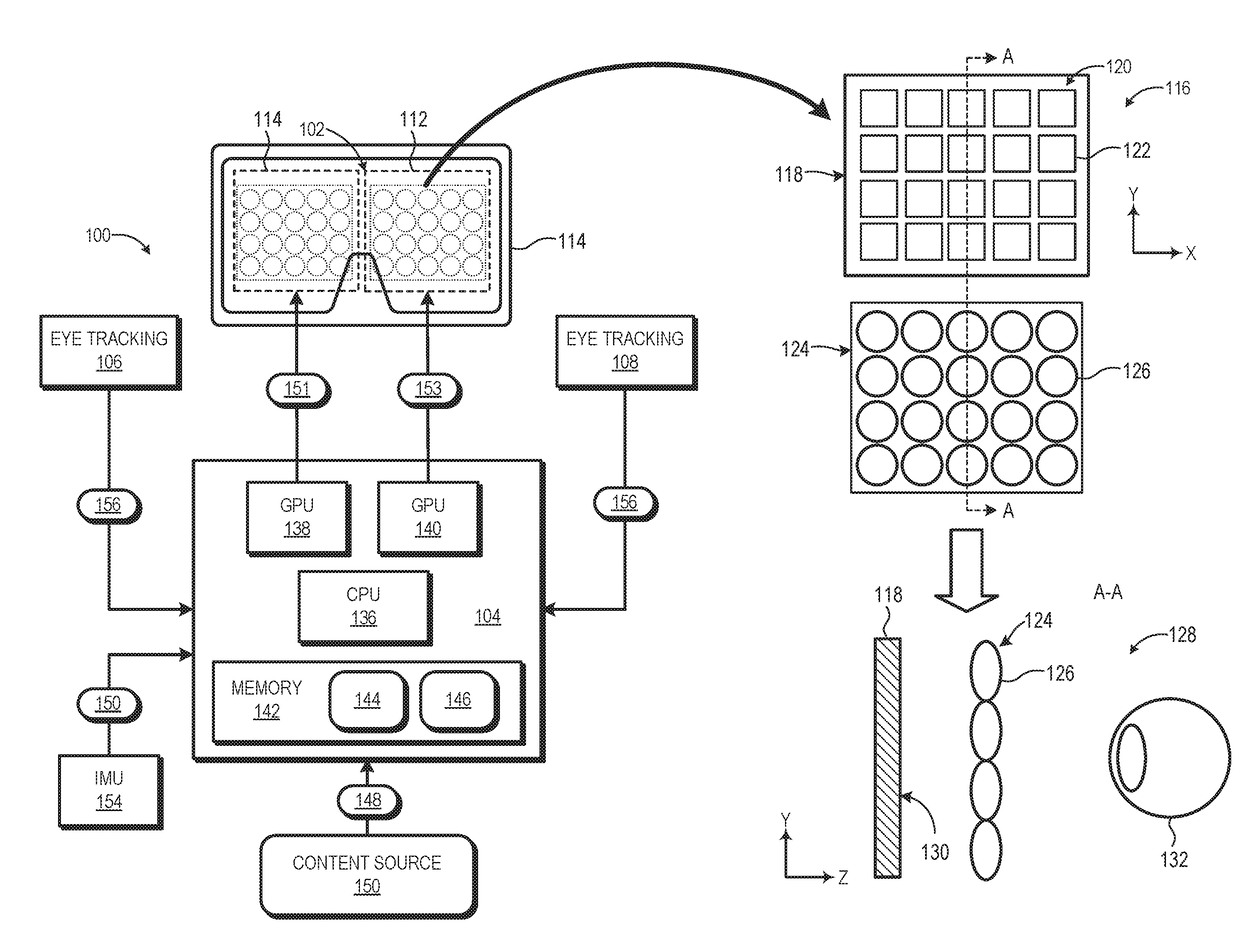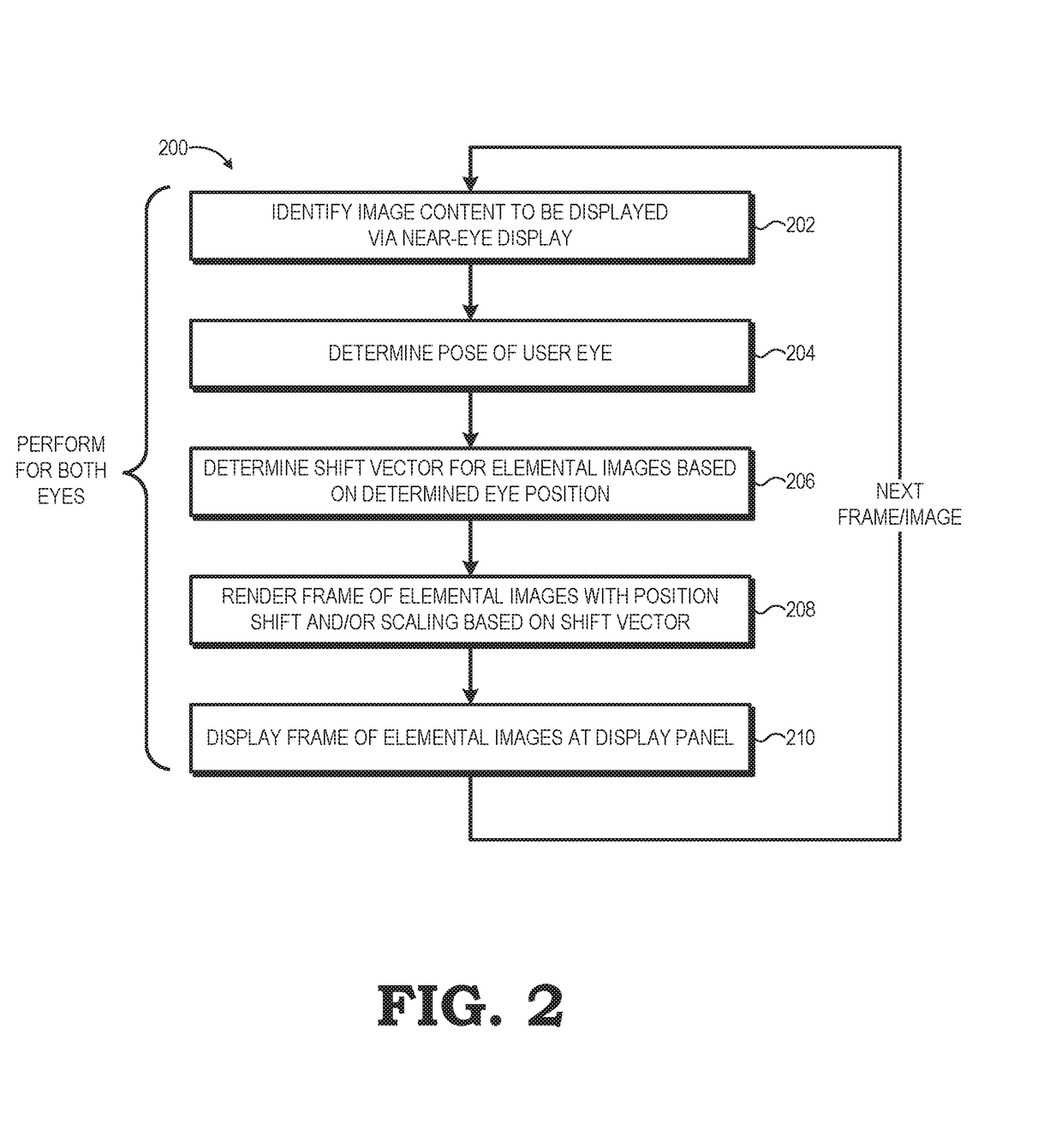Near-eye display with extended effective eyebox via eye tracking
a technology of eye tracking and eye display, applied in the field of eye display, can solve the problem of occlusion of at least a portion of the imagery intended to be displayed to the user's ey
- Summary
- Abstract
- Description
- Claims
- Application Information
AI Technical Summary
Benefits of technology
Problems solved by technology
Method used
Image
Examples
Embodiment Construction
[0013]FIGS. 1-9 illustrate example methods and systems for dynamic eyebox adjustment based on user eye pose in a near-eye display system. In at least one embodiment, the near-eye display system employs a computational display to display near-eye lightfield frames of imagery to a user so as to provide the user with an immersive virtual reality (VR) or augmented reality (AR) experience. Each near-eye lightfield frame is composed of an array of elemental images, with each elemental image representing a view of an object or scene from a different corresponding viewpoint. An array of lenslets overlies the display panel and operates to present the array of elemental images to the user as a single autostereoscopic image.
[0014]As the eyebox dimensions, or “size”, for the computational display are proportional to the ratio of eye relief to lenslet focal length, an attempt to increase eyebox size generally results in reduced field of view (FOV), and vice versa. To provide improved eyebox size...
PUM
 Login to View More
Login to View More Abstract
Description
Claims
Application Information
 Login to View More
Login to View More - R&D
- Intellectual Property
- Life Sciences
- Materials
- Tech Scout
- Unparalleled Data Quality
- Higher Quality Content
- 60% Fewer Hallucinations
Browse by: Latest US Patents, China's latest patents, Technical Efficacy Thesaurus, Application Domain, Technology Topic, Popular Technical Reports.
© 2025 PatSnap. All rights reserved.Legal|Privacy policy|Modern Slavery Act Transparency Statement|Sitemap|About US| Contact US: help@patsnap.com



